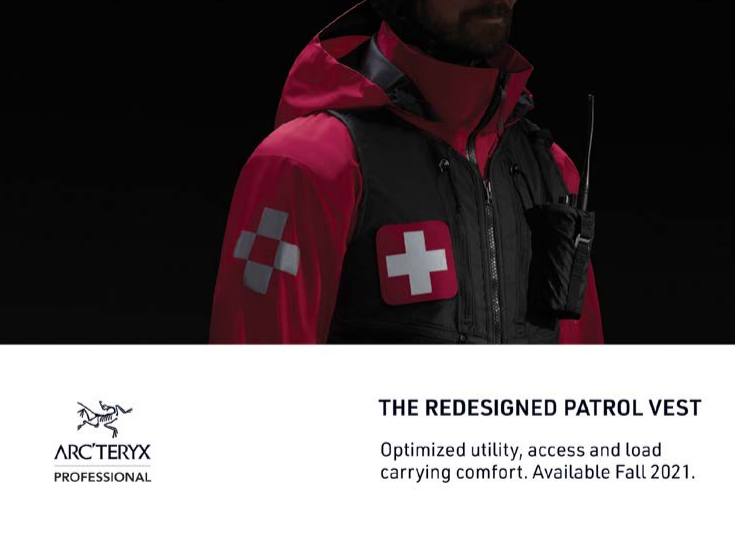by J. Pearce Beissinger, MS, PA-C, DiMM
Is the snow melting yet? Any floods in your neck of the woods? Spring is upon us and with the change of season comes more rain and melting snow. During these times a refresher on the topic of drowning is in order. It is especially relevant for the MRA as many of our teams are involved in field duties beyond the normal scope of technical mountain rescue, engaging us in even more hazardous environments such as swift-water, canyons, and even submerged vehicles all the while in an effort to reach and appropriately treat our intended subjects.
In this article, we will cover the topic of drowning in 3 sections:
Part 1: Background
A. Epidemiology of fatal drowning.
B The definition of drowning.
Part 2: Rescue
A. Drowning relevance in rescue.
B. SAR approach to the drowning patient.
Part 3: Considerations in Drowning Resuscitation.
Part 1: Background
Drowning can occur in the front-country or the backcountry. Worldwide, drowning causes about 300,000 deaths annually.6 This accounts for roughly 3500-4000 deaths per year in the United States, an average of 10 fatal drownings daily. It is the leading cause of unintentional injury-related death for children ages 1-4, mostly related to swimming pools, with an incidence of nearly 5 times greater in the African-American population compared to Caucasian children. Adolescents and young adults in natural bodies of water make up the second most prevalent group of drowning by age. Overall, males account for nearly twice the number of drowning fatalities compared to females. As is often the case with recreational outdoor activities, there is an association between alcohol use and drowning; a blood alcohol level of 0.10 g/dL is associated with a roughly 10 times greater risk of death in boating activities compared to an undetectable blood alcohol.3
Key to the discussion of prevention, treatment, and rescue related-activities is a proper review of drowning, which is often mistakenly described as a single event but is actually a “process of experiencing respiratory impairment due to the submersion or immersion in liquid.’‘5,6 Drowning has also historically been inaccurately categorized as near, wet, dry, secondary, freshwater, saltwater, and secondary. Concisely stated, these categories lack physiological relevance and as distinctions serve only to cause confusion to the precipitating issue of mortality – hypoxia and eventual cardiopulmonary arrest.
Part 2: Rescue
Rescuers should be careful in aquatic environments for their own safety. The ubiquitous euphemism of “Safety First” often brashly underestimates the importance of scene safety in an objectively dynamic environment. Water rescue is inherently unsafe, particularly for poorly prepared or poorly trained rescuers. Acknowledging, evaluating, and mitigating risk in a thoughtful way should be second nature to rescuers. This concept has been described as !Safety Third.”2 which intentionally acknowledges the paradox of evaluating risk while still engaging in it.
Personal flotation devices (PFDs) and floating extrication devices (rescue tubes, backboard/ SUP, etc) should be used in water rescue. Similar to !edge zones in technical rope rescue, demarcating the barrier to the water-related rescue activity is appropriate. Even for proficient rescuers trained in water rescue equipped with appropriate extrication devices, rescue is best accomplished from outside the water. The lifeguard industry, scouting associations, and the U.S. Army all use the vernacular Reach, Throw, Row, Go” in which the emphasis is placed on an out-of-water rescue with tools such as rope throw bags or shepherd“s crooks. If water entry is required, the use of adjunct rescue devices and system redundancy with downstream rescue attendants and spotters should be used.
Part 3: Considerations in Drowning Resuscitation
On reaching the patient, rescuers should promptly address life-threatening conditions. By standard convention a patient without
vital signs would prompt the rescuers to initiate CPR however is likely to be futile until the patient has been removed from the water. Chest compressions cannot effectively be performed on a submerged victim. While some skilled and trained water rescuers may possess the ability to perform breathing, in most circumstances it may be both appropriate (and timely) to remove the patient from the water prior to beginning any treatment.
Rapid reversal of the main physiologic insult will have the greatest success in reducing morbidity and mortality (injury and death). Rescuers should immediately attempt to correct hypoxia in a drowning victim with rescue breathing as soon as able. Instead of compression-only CPR or following the current general standard order of Circulation, Airway, Breathing (CAB), the traditional order of A-B-C should be implemented. The first step is control of the airway and ventilation with room-air supplementation, mouth mouth (preferably with a barrier or family member), or ideally supplemental oxygen if available. If no pulse is detected, add in chest compressions following your established guidelines e.g. a ratio of 30:2 for adult 2-person CPR without an advanced airway. More detailed and up to date guidance is available in the “Cardiac arrest in special circumstances” section 4 of the 2021 European Resuscitation Council Guidelines for Resuscitation.
Other considerations in the rescue response include the topics of: drowning prevention, AEDs, mitigation of hypothermia, cervical spinal injury, Heimlich maneuver and decisions for cessation of resuscitation. A concise review of these issues is briefly addressed below5:
• Ventricular Fibrillation: “VFib” in the drowning victim is quite rare (approximately 10%). While it is not inappropriate to procure and apply an AED, such resource acquisition and application should not hinder the performance of high quality CPR in any cardiac arrest patient.
• Heimlich maneuver: Use of the Heimlich maneuver (abdominal thrusts) does not reduce mortality in drowning victims and can cause aspiration. The Heimlich maneuver should be used only if there is evidence of airway obstruction with a solid object.
• Rewarming: Hypothermic drowning victims in cardiac arrest should be rewarmed, if possible, once high quality CPR is in progress. Rewarming may be employed with passive warming techniques addressing the methods of heat loss such as conduction, convection, evaporation, and radiation. Such efforts should not hinder the priority of high quality CPR.
• Spinal Injury: is a complex topic to address in the drowning patient. The incidence of spinal injury in drowning victims is low (0.5%-5.0%). If there is a history of blunt trauma or a mechanism with a high risk for cervical spine injury such as a fall or dive from height, Spinal Motion Restriction should be considered if it will not interfere with performance of high quality CPR especially since respiratory compromise from a drowning process may occur minutes to hours after removal from the water. If immediate evidence of focal neurological deficit, impaired consciousness (i.e. alcohol intoxication), or significant distracting injury are present without respiratory or cardiac arrest, this should prompt attention to SMR following stabilization of the ABC’s. MRA Rescuers are encouraged to review and comply with their local medical protocols in coordination with their medical director(s) on this rapidly changing topic.
• Transport vs release from care: A victim of drowning without any of the following signs may be released on scene: abnormal lung sounds, frothy sputum or foamy airway, severe cough, decreased level of consciousness, or decreased blood pressure (systolic BP <90). All other patients should be transferred urgently to a higher level of care.
• Cessation of rescue efforts: This is a complex decision and should be made, when possible, in coordination with the medical director or online medical control. The greatest determining factor on mortality is the duration of submersion. Generally speaking, cessation of resuscitation (and rescue) may be discontinued if meeting one of the following: failure to resuscitate after 30 minutes of high quality CPR with water temp > 43°F, after 90 minutes of high quality CPR with water temp < 43°F, or any unacceptable risk of safety to rescuers on scene. There are always exceptions, for example in the presence of primary hypothermic or traumatic arrest, and best judgment should always be employed.
Conclusion
1. Drowning is a process of respiratory impairment due to the submersion or immersion in liquid.
2. Drowning missions are inherently unsafe so mitigate rescuer risk, e.g. !Reach, Throw, Row, Go” .
3. Prioritization of the airway is the priority for a drowning victim during CPR.
As mentioned above, the process of drowning may exhibit symptoms hours after water extrication. Foreknowledge of this possibility, through even a superficial understanding of drowning physiology, may help guide the timing and methods of evacuation. As seasons change, so often do our rescue environments and patient epidemiology. The performance of water rescue and treatment of drowning patients is highlighted by both the issues of attention to rescuer safety and a prioritization of patient oxygenation and ventilation. Finally, community engagement to prevent drowning is in alignment with the mission of the MRA – !saving lives through rescue and mountain safety education.”
References:
1. Claesson, A., Lindqvist, J., & Herlitz, J. (2014). Cardiac arrest due to drowning—changes over time and factors of importance for survival. Resuscitation, 85(5), 644–648.
2. Davis, C., By, Davis, C., Abo, B., McClure, S. F., & Hawkins, S. C. (2021, August 31). Safety is third, not first, and we all know it should be – jems: EMS, emergency medical services – training, paramedic, EMT News. JEMS. Retrieved March 30, 2022.
3. Driscoll, T. R. (2004). Review of the role of alcohol in drowning associated with Recreational Aquatic Activity. Injury Prevention, 10(2), 107–113.
4. Grmec, Š., Strnad, M., & Podgoršek, D. (2009). Comparison of the characteristics and outcome among patients suffering from out-of-hospital primary cardiac arrest and drowning victims in cardiac arrest. International Journal of Emergency Medicine, 2(1), 7–12.
5. Hawkins, S. (2018). Wilderness Ems. Wolters Kluwer Health.
6. Schmidt, A. C., Sempsrott, J. R., Hawkins, S. C., Arastu, A. S., Cushing, T. A., & Auerbach, P. S. (2019). Wilderness Medical Society Clinical Practice Guidelines for the treatment and prevention of drowning: 2019 update. Wilderness & Environmental Medicine, 30(4).
J. Pearce Beissinger is a physician assistant in cardiovascular surgery, critical care, and emergency medicine. He has served as past president, rescue leader, and assistant medical director with Portland Mountain Rescue. He is a longstanding member of the MRA MedCOM, a committee of medical professionals that writes a quarterly contribution to the Meridian. For questions about anything related to medical issues contact medcom@mra.org. Thank you.



